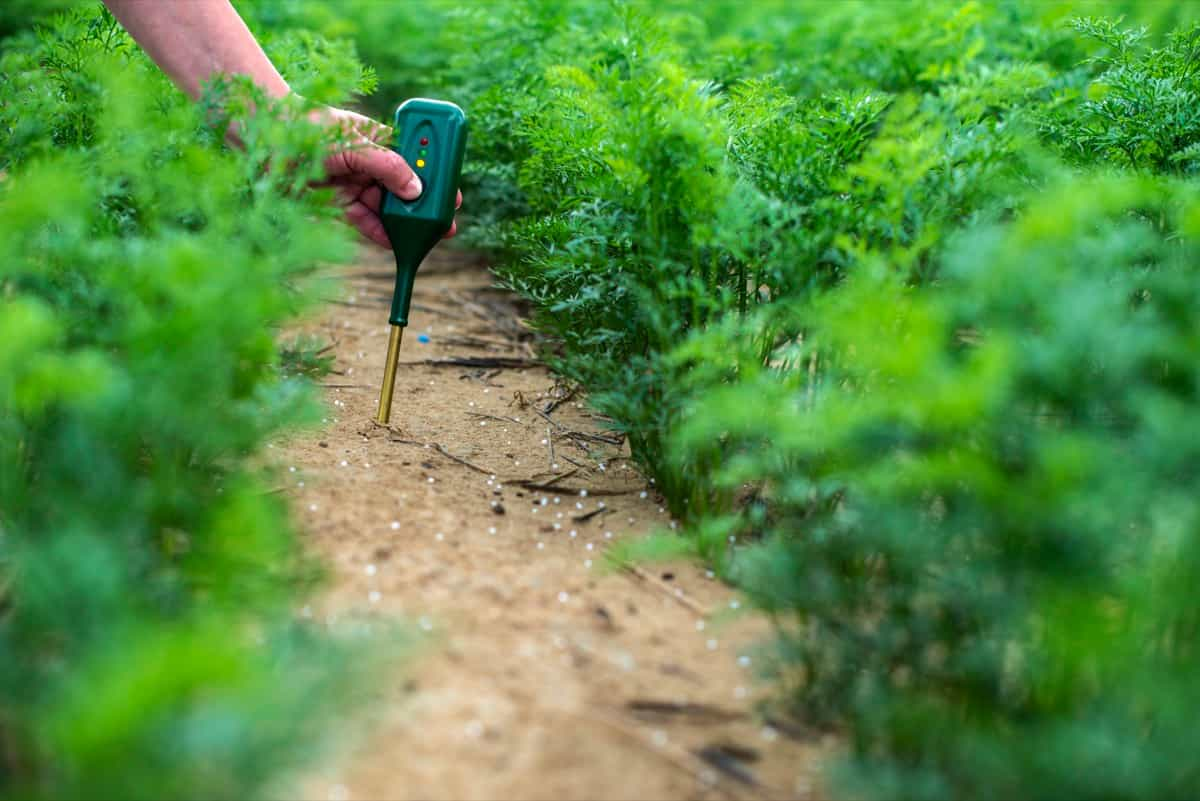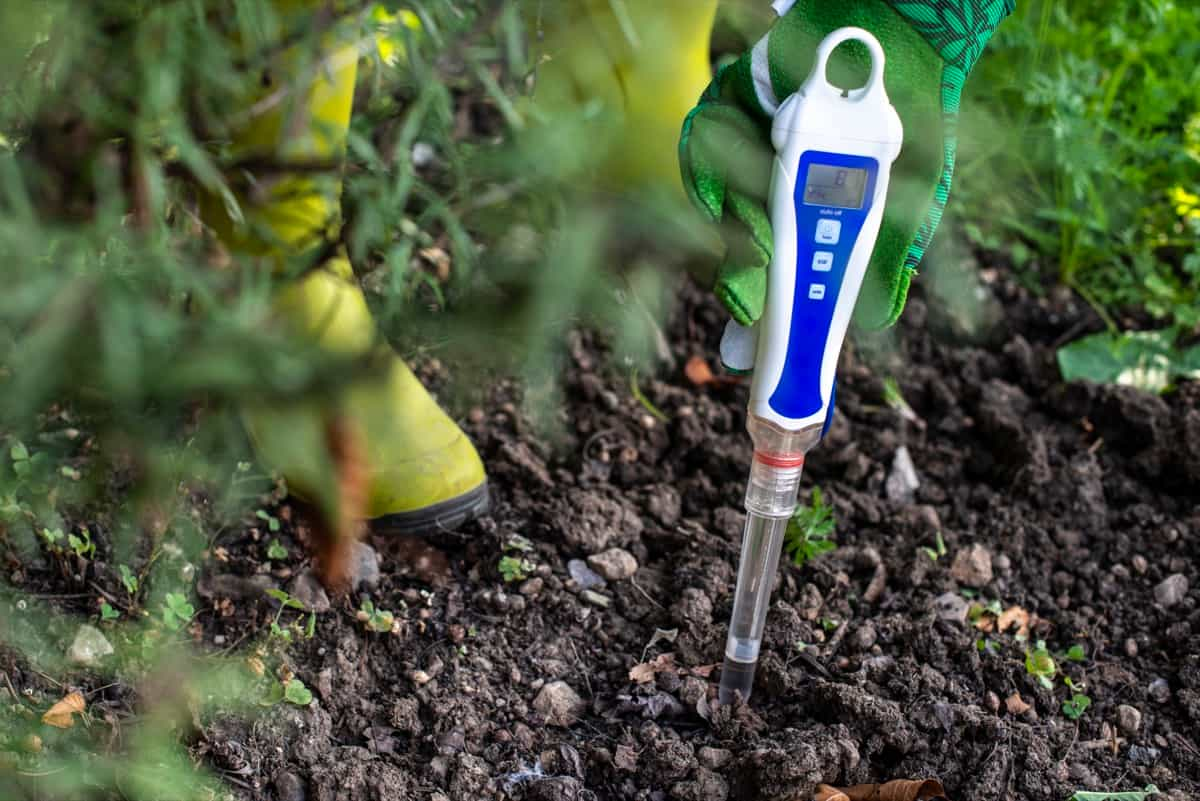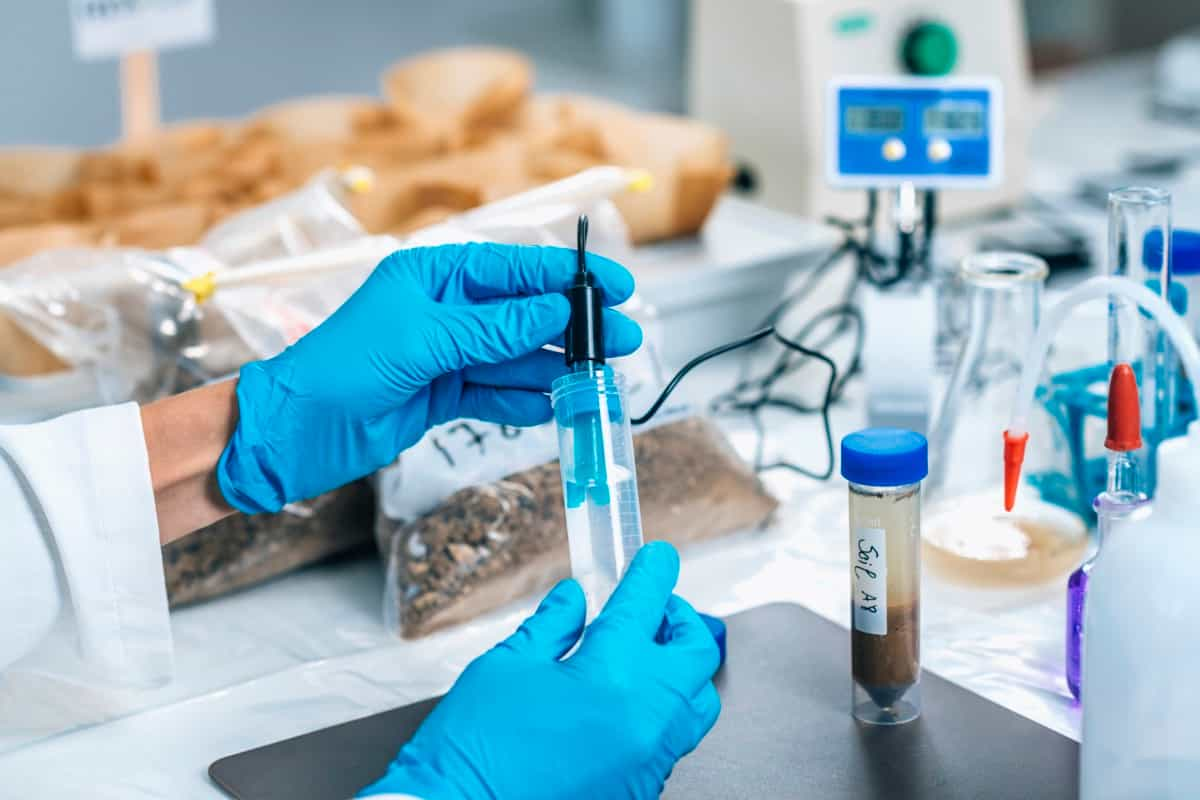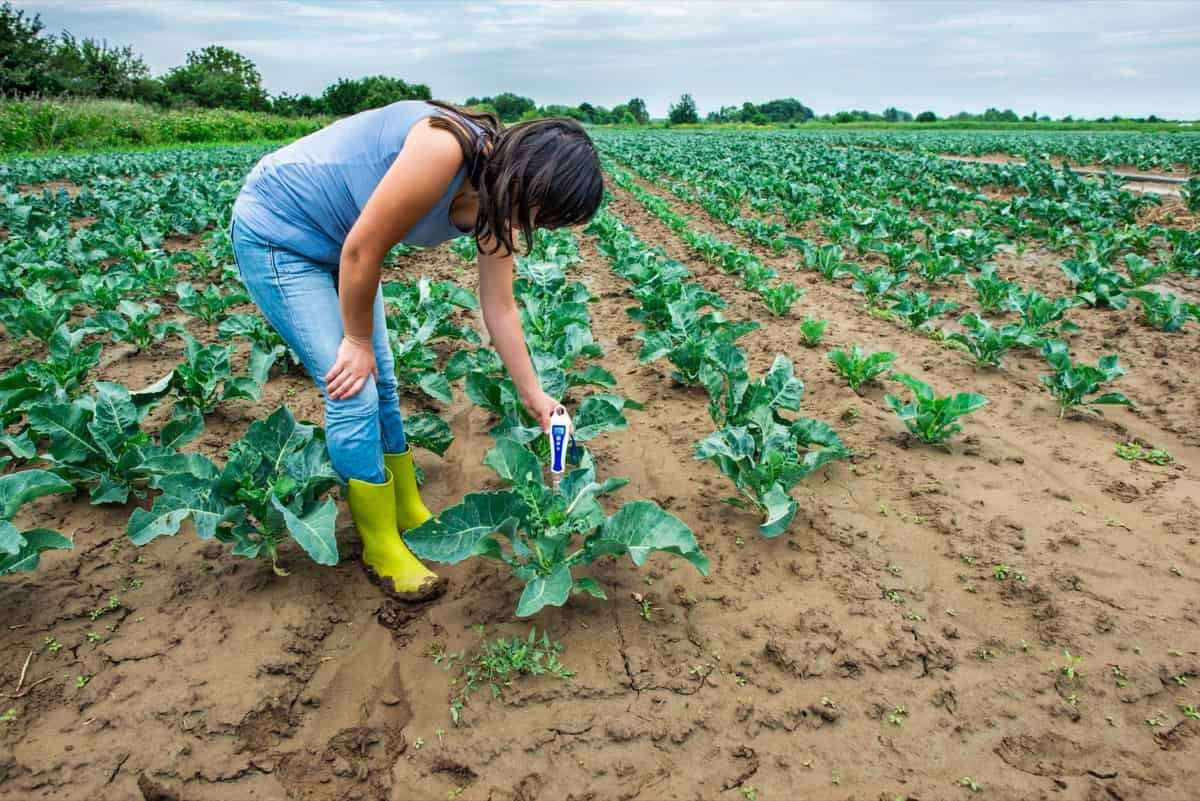Nutrient sensors are an important part of modern agriculture. They help farmers use fertilizers and other soil inputs in the best way possible, which improves food yields, reduces costs, and protects the environment. These sensors work by figuring out how much nitrogen, phosphorus, and potassium are in the soil and sending that information back to farmers in real time so they can change how they grow.

Using nutrient monitors, farms can avoid too much fertilizer, lower the risk of nutrient runoff and groundwater contamination, grow healthier crops, and give better yields. This piece will talk about the benefits of nutrient sensors in agriculture and how they work.
Importance of Nutrient Sensors in Agriculture
What are Nutrient Sensors?
Nutrient sensors are devices used in agriculture to measure the concentration of essential nutrients in the soil, such as nitrogen, phosphorus, and potassium. These sensors provide real-time data that helps farmers optimize fertilizer application and reduce nutrient waste, ultimately improving crop yields and reducing environmental impact. Using nutrient sensors, farmers can make informed decisions about when and how much fertilizer to apply, leading to more efficient and sustainable agricultural practices.
Need of Nutrient Sensors in Agriculture
- Nutrient sensors are devices used to measure essential nutrients in the soil, helping farmers optimize fertilizer application and reduce waste.
- Precision agriculture is a goal for humanity to achieve sustainability, and nutrient sensors play a crucial role in achieving this goal.
- Deficiency of any of the 17 essential nutrients critical for plant growth can result in reduced yields, making monitoring and maintaining nutrient levels.
- Non-mineral elements like C, H, and O are available to plants from the atmosphere. While mineral elements like N, P, and K are needed in relatively larger quantities and added exogenously to the soil.
- Excessive concentrations of micronutrients in the soil can lead to plant toxicity, highlighting the importance of precise monitoring.
- Nutrient/fertilizer application is one of the largest expenses incurred in crop production, making precise monitoring of nutrients in soil crucial for better application efficiencies and enhanced sustainability in agriculture.
- Nutrient sensors enable farmers to decide when and how much fertilizer to apply, ultimately improving crop yields and reducing environmental impact.
- The green revolution in the mid-20th century increased crop production worldwide but also transformed agriculture and altered the natural soil nutrient cycling through agrochemicals.
- Nutrient sensors play a critical role in achieving sustainability in agriculture by enabling farmers to monitor and maintain soil nutrient levels precisely.
In case you missed it: Importance of Yield Monitors in Agriculture: Advantages and Working Principle

Benefits of Nutrient Sensors
- Precise monitoring of nutrient levels in soil can help farmers avoid over-fertilization, which can lead to environmental pollution and crop damage.
- Nutrient sensors can reduce fertilizer costs by optimizing the amount of fertilizer applied, leading to cost savings for farmers.
- Using nutrient sensors can also help farmers avoid under-fertilization, which can result in reduced crop yields.
- The real-time data provided by nutrient sensors enables farmers to make informed decisions about when and how much fertilizer to apply, leading to more efficient and sustainable agricultural practices.
- Nutrient sensors can help farmers identify deficiencies early on, allowing them to take corrective action before crop yields are impacted.
- Using nutrient sensors can improve soil health, as soil nutrients are maintained at optimal plant growth and development levels.
- Nutrient sensors can also reduce the risk of nutrient leaching, leading to soil degradation and contamination of nearby water sources.
- Using nutrient sensors in agriculture can help minimize the environmental impact of fertilizer application by reducing waste and pollution.
- Using nutrient sensors in agriculture can lead to more efficient and sustainable practices, benefiting farmers and the environment.
Working Principle of Nutrient Sensors
- Nutrient sensors in agriculture detect the presence and concentration of specific nutrients in the soil. The working principle of nutrient sensors involves using a probe with a sensing element that interacts with the nutrient of interest.
- The sensing element generates a signal that is then measured and converted into a nutrient concentration value.
- Different types of nutrient sensors exist, including ion-selective membrane (ISM) and optical sensors. ISM sensors selectively allow ions of the target nutrient to pass through the membrane, generating an electrical potential that is then measured and converted into a nutrient concentration value.
- Optical sensors work by measuring the absorption or fluorescence of light by the nutrient of interest.
- When using nutrient sensors, it is important to follow some general guidelines to ensure accurate and reliable measurements. These include properly calibrating the sensor, which involves establishing a relationship between the sensor’s signal output and the actual nutrient concentration in the soil.
- The sensor should also be inserted into the proper depth in the soil and allowed to equilibrate before taking a measurement.
- Nutrient sensors can help farmers optimize fertilizer application by providing real-time information on soil nutrient levels. This can lead to more efficient use of fertilizers, reducing costs and minimizing environmental impact.
- Nutrient sensors can also help farmers identify nutrient deficiencies in crops, allowing for targeted nutrient supplementation.
In case you missed it: Importance of Optical Sensors in Agriculture: Advantages and Working Principles

Methodologies for Nutrient Detection in Soil
Soil nutrient detection methods are employed, including laboratory-based methods, ion-selective membrane (ISM)-based electrochemical (EC) sensors, other biosensing methods, and electrophoresis-based methods. Laboratory-based methods involve soil sampling and laboratory analysis to determine nutrient content. This method is accurate but time-consuming and requires trained personnel and specialized equipment. It is not practical for real-time nutrient monitoring in the field.
ISM-based EC sensors are a popular method for real-time nutrient monitoring. These sensors utilize an ion-selective membrane to selectively detect specific nutrients, such as nitrogen, phosphorus, and potassium, in soil. The membrane selectively allows ions of the target nutrient to pass through and generate an electrical signal, which is then measured and converted to a nutrient concentration value. ISM-based EC sensors are relatively inexpensive and easy to use but require regular calibration to maintain accuracy.
Other biosensing methods, such as enzyme-linked immunosorbent assay (ELISA), involve using biological molecules, such as antibodies or enzymes, to detect specific nutrients in the soil. These methods are highly specific but expensive and require specialized equipment and personnel. Electrophoresis-based methods involve separating charged nutrient molecules in a soil sample using an electric field. The separation is then analyzed to determine nutrient content. This method is highly accurate but is time-consuming and requires specialized equipment and personnel.
Advantages of Nutrient Sensors in Agriculture
- Precision farming: Nutrient sensors allow for real-time monitoring of soil nutrient levels, which can be used to optimize fertilizer application and reduce waste. This leads to more efficient use of fertilizers, reduced costs, and improved crop yields.
- Targeted nutrient supplementation: Nutrient sensors can help farmers identify nutrient deficiencies in crops, allowing for targeted nutrient supplementation. This can lead to improved crop health and increased yields.
- Environmental benefits: By reducing fertilizer waste and runoff, nutrient sensors can help to minimize environmental impact and protect water quality.
- Time and cost savings: Nutrient sensors can save farmers time and money by reducing the need for frequent soil testing and manual nutrient application.
- Increased data collection: Nutrient sensors can collect data on soil nutrient levels over time, allowing for the identification of trends and patterns. This can be valuable information for researchers and farmers looking to optimize crop production.
- Ease of use: Nutrient sensors are relatively easy to use and do not require extensive training or expertise.
- Reduced risk of over-fertilization: Nutrient sensors can help prevent over-fertilization, leading to environmental damage and reduced crop yields.
In case you missed it: A Guide to Understand Importance of Drones in Agriculture/Farming: Advantages, Applications, and Different Types

How to Use Nutrient Sensors in Agriculture
- Determine which nutrients to monitor.
- Choose the right type of nutrient sensor.
- Install the sensors.
- Connect the sensors to a data logger.
- Set up a data management system.
- Calibrate the sensors.
- Collect data.
- Analyze the data.
- Adjust fertilizer application.
- Maintain the sensors.
- Identify the nutrients to be monitored: Based on the requirements of your crops and the characteristics of your soil, identify the specific nutrients you wish to monitor.
- Choose the appropriate type of nutrient sensor: ion-selective membrane sensors, capacitance sensors, and optical sensors are among the available types of nutrient sensors. Choose the selection which fits your demands and budget the best.
- Install the sensors: According to the manufacturer’s instructions, install the sensors in the soil. Ensure the sensors are positioned at the appropriate depth for the monitored nutrient.
- Collect Data: Connect the sensors to a data logger. Ensure that the data logger is interoperable with the used sensors. Develop and implement a system for administering the data collected by the nutrient sensors. Software that enables you to analyze the data and make informed fertilizer application decisions may be included.
In case you missed it: How to Unlock Key Technologies to Improve Food Security: Reduce Pesticide Use and Enhance Crop Climate-Resilience

- Calibrate the sensors: To ensure accurate readings, calibrate the sensors according to the manufacturer’s instructions. Collect data from the nutrient sensors at regular intervals, such as daily or weekly, depending on your requirements.
- Analyze the data: Analyze the data collected by the nutrient sensors to determine soil nutrient level trends and patterns. Utilize this data to make educated decisions regarding fertilizer application. Adapt fertilizer application based on nutrient sensor data. This will allow you to maximize crop yields and minimize fertilizer waste.
- Maintain the sensors: Inspect the nutrient sensors regularly to ensure they operate correctly. To ensure accurate readings, clean the sensors and replace them as required.
Best Nutrient Sensors Available in Agriculture in the Market
- Teralytic offers a range of durable soil sensors that can last up to 10 years in the field, measuring nutrients, moisture, pH, temperature, and air quality in real time.
- CropX uses machine learning algorithms to optimize irrigation and nutrient application, with its sensors measuring moisture, temperature, and nutrients.
- METER Group’s selection of soil monitors detects pH, moisture, temperature, and nutrient level changes using patented capacitance technology, and data is accessible via a dashboard or mobile app.
- Using patented time-domain reflectometry technology, Decagon Devices provides soil sensors that measure moisture, temperature, and nutrients.
- These sensors help farmers make informed decisions regarding fertilization, irrigation, and other aspects of crop management, leading to better yields and reduced environmental impact.
The Future of Nutrient Sensors in Agriculture
- The future of nutrient sensors in agriculture looks bright since this technology helps farmers and the environment in many ways.
- In this area, a big trend is the creation of more advanced, integrated sensors that simultaneously measure multiple soil parameters, such as the soil’s pH, temperature, moisture level, and more.
- Farmers will be able to get even more accurate and detailed information from these sensors, which will help them make better decisions about fertilizing, watering, and other important parts of crop management.
- Precision farming methods using nutrient sensors are another exciting change that is becoming more common. GPS, drones, and other technologies are used in these methods to make detailed maps of the soil and crop conditions.
- This lets farms put fertilizers and other inputs exactly where they are needed. This can reduce waste, increase output, and make farming more environmentally friendly.
- Also, as the need for farming methods that are sustainable and good for the environment grows, nutrient sensors will play a key role in helping farms use fewer chemical fertilizers and other inputs.
- By giving farmers correct, real-time information about the levels of nutrients in the soil, these sensors can help them fertilize in a way that wastes less and has less of an effect on the environment.
How do Nutrient Sensors Work in Agriculture?
Nutrient sensors in agriculture work by detecting and measuring the levels of various nutrients in the soil, such as nitrogen, phosphorus, and potassium. The sensors can be based on various principles such as electrochemical, optical, or biological. They provide real-time data that can be used to make informed decisions about nutrient management.
What types of Crops can Benefit from Using Nutrient Sensors in Agriculture?
Nutrient sensors can be used in various crops, including cereals, vegetables, fruits, and ornamental plants. The sensors can help optimize nutrient application for different crop types and growth stages, resulting in better yields and quality.
Are Nutrient Sensors Expensive to use in Agriculture?
The cost of nutrient sensors can vary depending on the type of sensor, brand, and features. However, in the long run, nutrient sensors can help reduce fertilizer usage, improve crop yields, and enhance sustainability,
In case you missed it: Importance of Soil Moisture Sensors in Agriculture: Advantages and Working Principle

Can Nutrient Sensors be Used in Organic Agriculture
Nutrient sensors can be used in organic agriculture. They can be particularly useful in organic farming, where synthetic fertilizers are limited. Nutrient sensors can help organic farmers optimize organic amendments and manage nutrient levels in the soil for improved crop performance.
Conclusion
Nutrient sensors in agriculture offer numerous advantages, such as increased efficiency, cost savings, and improved crop yield. The working principle of these sensors involves measuring various parameters in the soil and providing real-time data for precision farming.
- Types of Pesticides Used in Agriculture: A Beginner’s Guide
- Economical Aquaculture: A Guide to Low-Budget Fish Farming
- 15 Common Planting Errors That Can Doom Your Fruit Trees
- How to Make Houseplants Bushy: Effective Tips and Ideas
- Innovative Strategies for Boosting Coconut Pollination and Yield
- Pollination Strategies for Maximum Pumpkin Yield
- The Complete Guide to Chicken Fattening: Strategies for Maximum Growth
- Natural Solutions for Tulip Problems: 100% Effective Remedies for Leaf and Bulb-Related Issues
- Revolutionizing Citrus Preservation: Towards a Healthier, Greener Future
- Natural Solutions for Peony Leaf and Flower Problems: 100% Effective Remedies
- Maximizing Profits with Avocado Contract Farming in India: A Comprehensive Guide
- Natural Solutions for Hydrangea Problems: 100% Effective Remedies for Leaf and Flowers
- The Ultimate Guide to Choosing the Perfect Foliage Friend: Bringing Life Indoors
- From Sunlight to Sustainability: 15 Ways to Use Solar Technology in Agriculture
- The Ultimate Guide to Dong Tao Chicken: Exploring from History to Raising
- The Eco-Friendly Makeover: How to Convert Your Unused Swimming Pool into a Fish Pond
- Mastering the Art of Delaware Chicken Farming: Essentials for Healthy Backyard Flocks
- 20 Best Homemade Fertilizers for Money Plant: DIY Recipes and Application Methods
- How to Craft a Comprehensive Free-Range Chicken Farming Business Plan
- Brighten Your Flock: Raising Easter Egger Chickens for Beauty and Bounty
- How to Optimize Your Poultry Egg Farm Business Plan with These Strategies
- Subsidy for Spirulina Cultivation: How Indian Government Schemes Encouraging Spirulina Farmers
- Ultimate Guide to Raising Dominique Chickens: Breeding, Feeding, Egg-Production, and Care
- Mastering the Art of Raising Jersey Giant Chickens: Care, Feeding, and More
- Ultimate Guide to Raising Legbar Chickens: Breeding, Farming Practices, Diet, Egg-Production
- How to Raise Welsummer Chickens: A Comprehensive Guide for Beginners
- How to Protect Indoor Plants in Winter: A Comprehensive Guide
- Ultimate Guide to Grow Bag Gardening: Tips, Tricks, and Planting Ideas for Urban Gardeners
- Guide to Lotus Cultivation: How to Propagate, Plant, Grow, Care, Cost, and Profit
- Agriculture Drone Subsidy Scheme: Government Kisan Subsidy, License, and How to Apply Online
- Ultimate Guide to Raising Araucana Chickens: Breed Profile, Farming Economics, Diet, and Care
- Bringing Hydroponics to Classroom: Importance, Benefits of Learning for School Students
- Ultimate Guide to Raising Polish Chickens: Breed Profile, Farming Economics, Diet, and Care
- Ultimate Guide to Raising Australorp Chickens: Profile, Farming Economics, Egg Production, Diet, and Care
- Silkie Chicken Farming: Raising Practices, Varieties, Egg Production, Diet, and Care
- Sussex Chicken Farming: Raising Practices, Varieties, Egg Production, Diet and Care